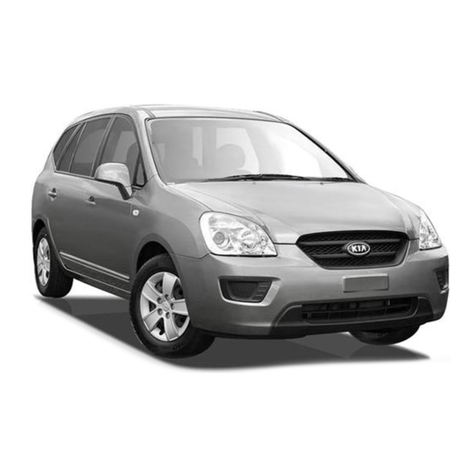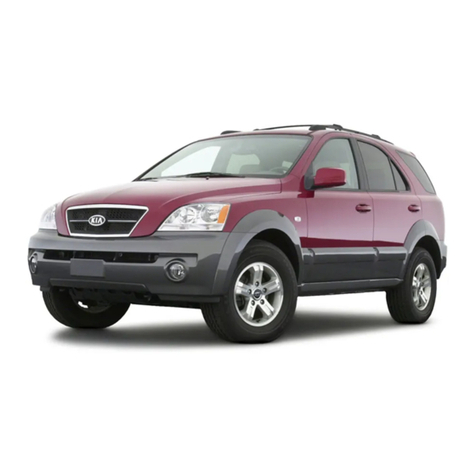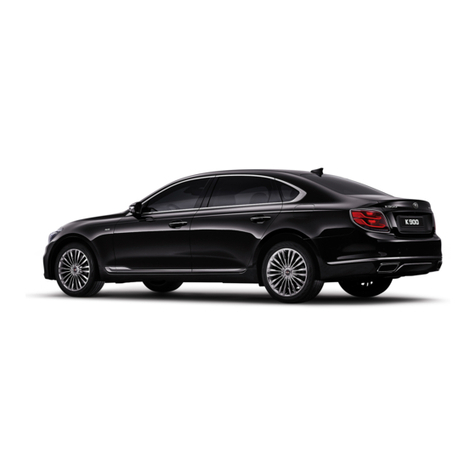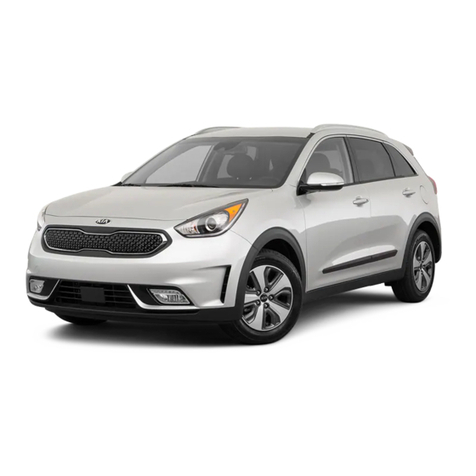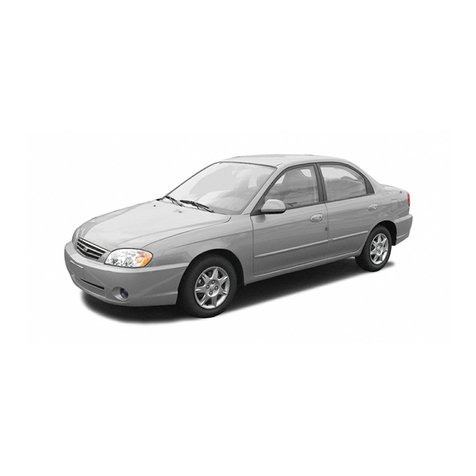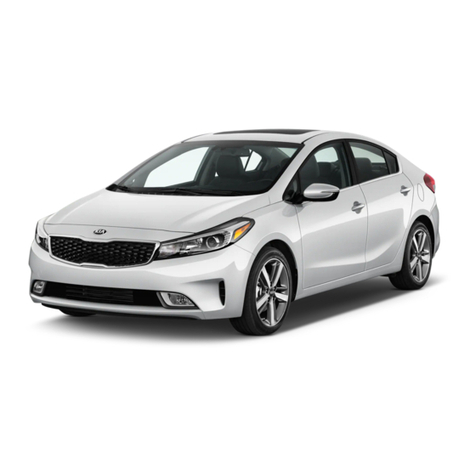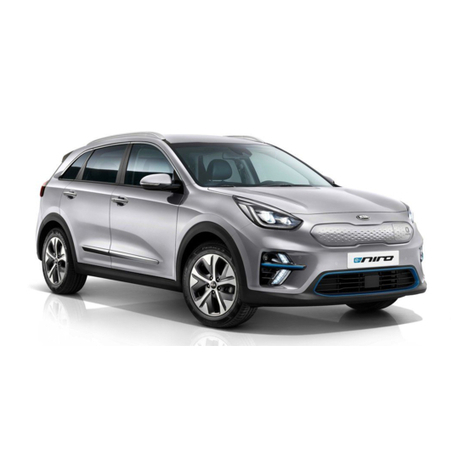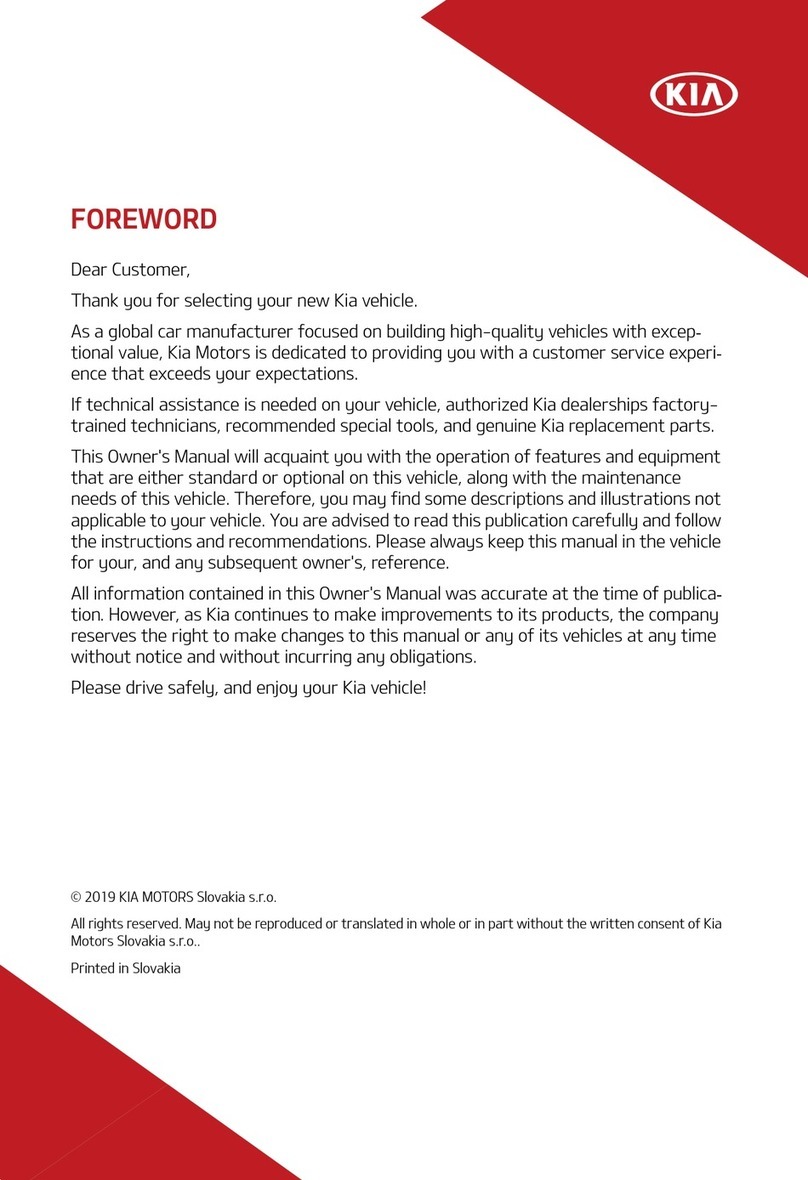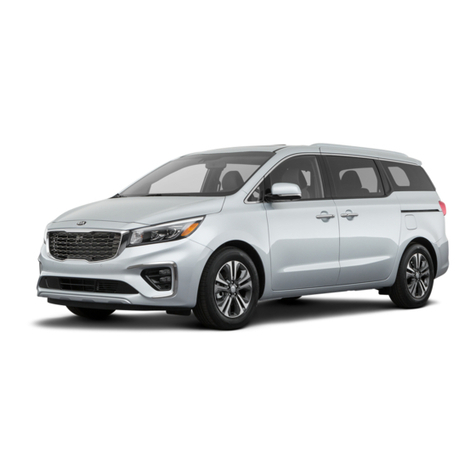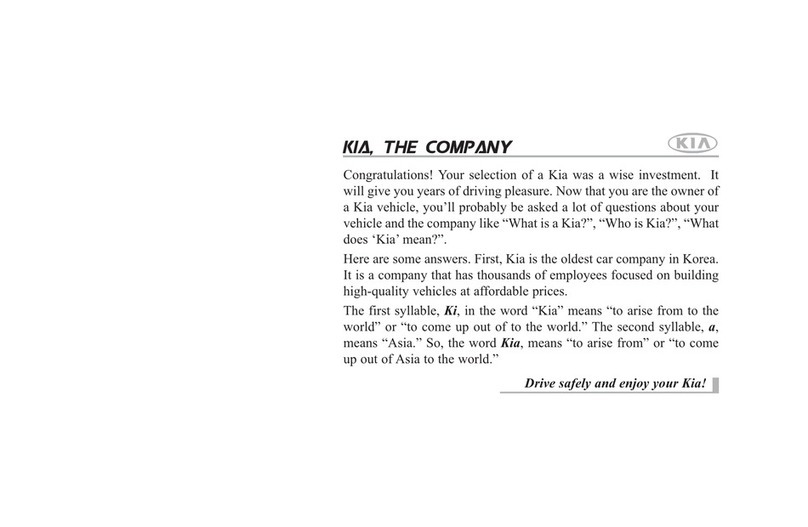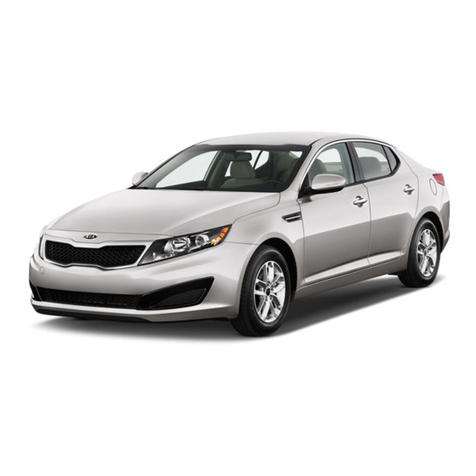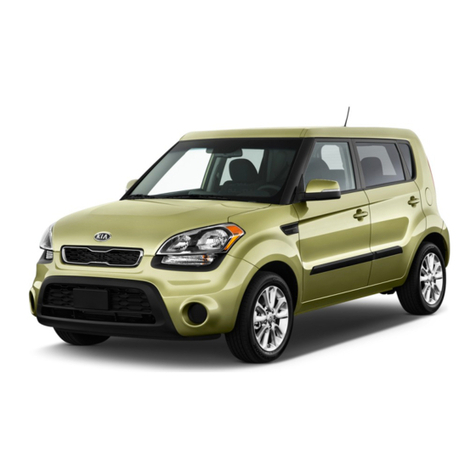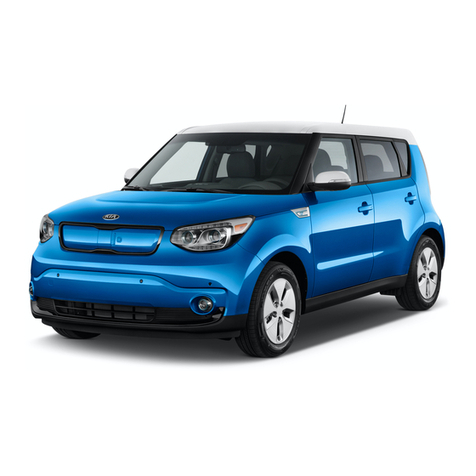
Introduction
21
Fuel requirements
Introduction
Fuel requirements
Your new vehicle is designed to use
only unleaded fuel having a pump
octane number ((R+M)/2) of 87
(Research Octane Number 91) or
higher. (Do not use methanol blend-
ed fuels.)
Your new vehicle is designed to
obtain maximum performance with
UNLEADED FUEL, as well as mini-
mize exhaust emissions and spark
plug fouling.
Never add any fuel system cleaning
agents to the fuel tank other than
what has been specified. (Consult an
authorized Kia dealer for details.)
䳜Tighten the cap until it clicks one
time, otherwise the Check Engine
light will illuminate.
Refueling
䳜Do not "top off" after the nozzle
automatically shuts off. Attempts
to force more fuel into the tank
can cause fuel overflow onto you
and the ground, causing a risk of
fire.
䳜Always check that the fuel cap is
installed securely to prevent fuel
spillage, especially in the event of
an accident.
Gasoline containing alcohol and
methanol
Gasohol, a mixture of gasoline and
ethanol (also known as grain alco
-
hol), and gasoline or gasohol con
-
taining methanol (also known as
wood alcohol) are being marketed
along with or instead of leaded or
unleaded gasoline.
Pursuant to Environmental Protec
-
tion Agency (EPA) regulations, etha
-
nol may be used in your vehicle.
Do not use gasohol containing more
than 15% ethanol, and do not use
gasoline or gasohol containing any
methanol. Ethanol provides less
energy than gasoline and attracts
water. Thus, it is likely to reduce
your fuel efficiency and could lower
your MPG results.
Methanol may cause drivability
problems and damage to the fuel
system, engine control system and
emission control system.
Discontinue using gasohol of any
kind if drivability problems occur.
Vehicle damage or drivability prob
-
lems may not be covered by the
manufacturer's warranty if they
result from the use of:
1. Gasoline or gasohol containing
methanol.
2. Leaded fuel or leaded gasohol.
3. Gasohol containing more than
15% ethanol.


